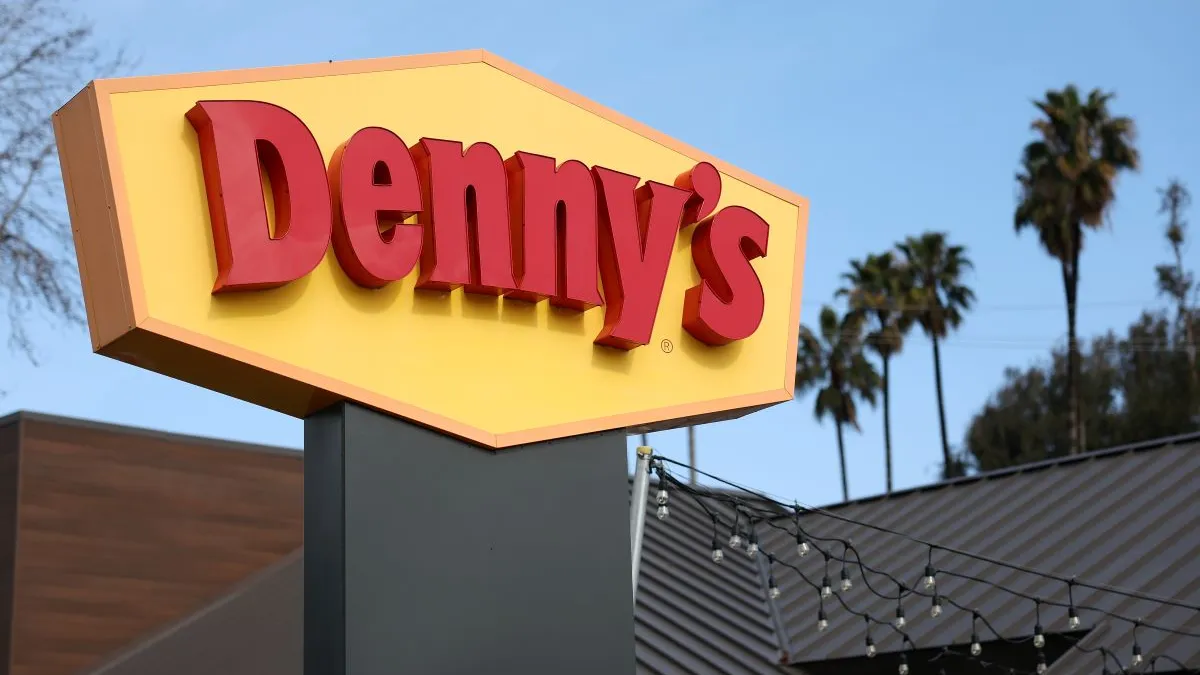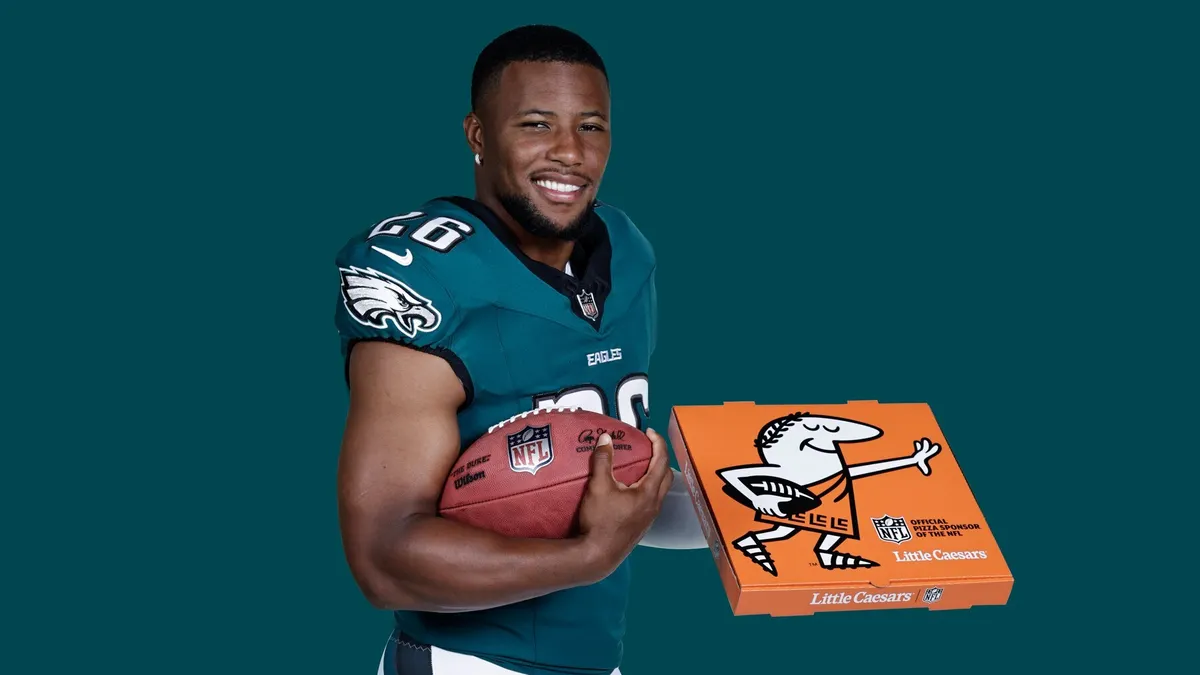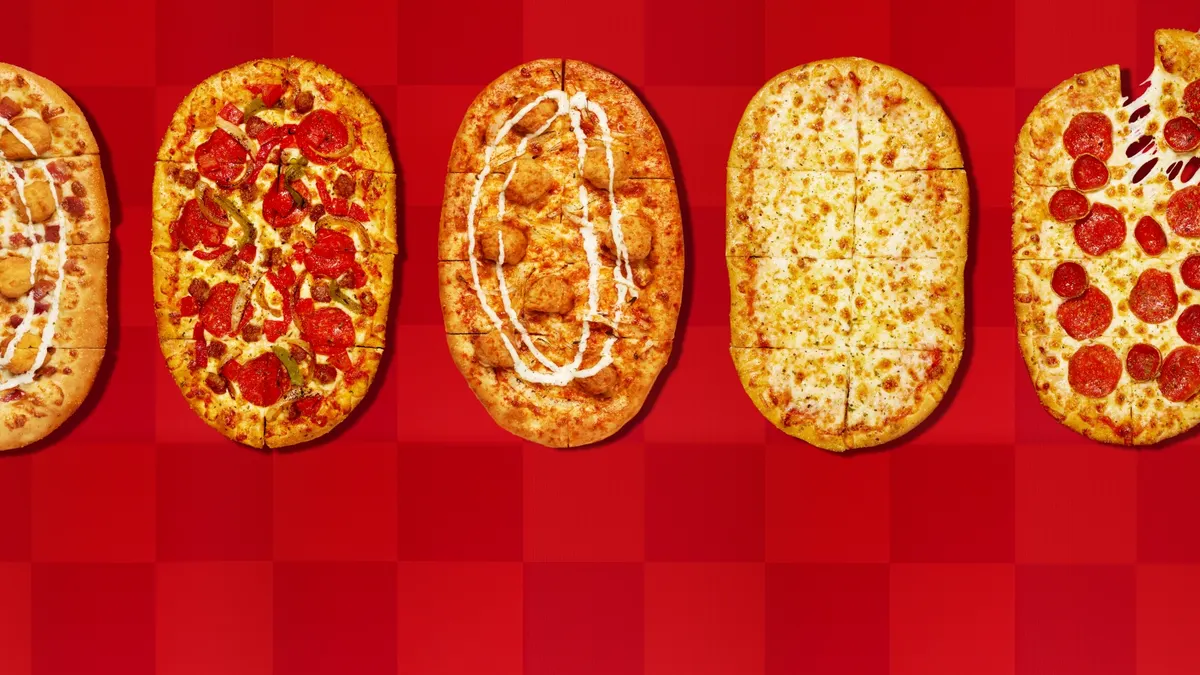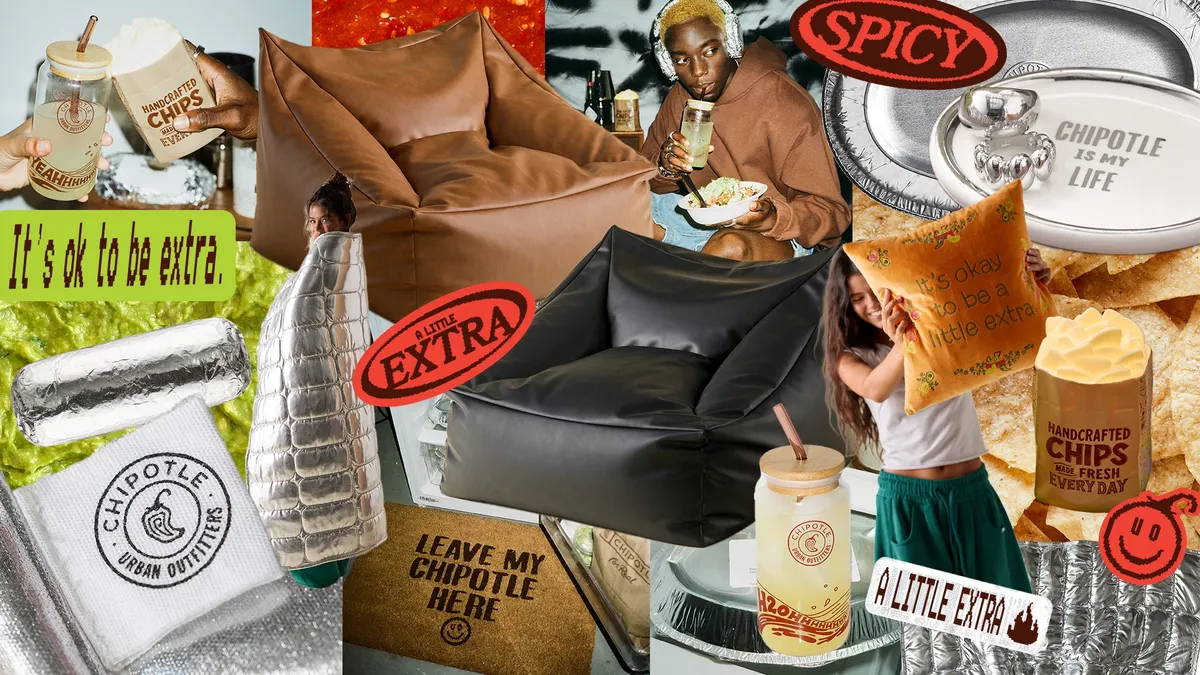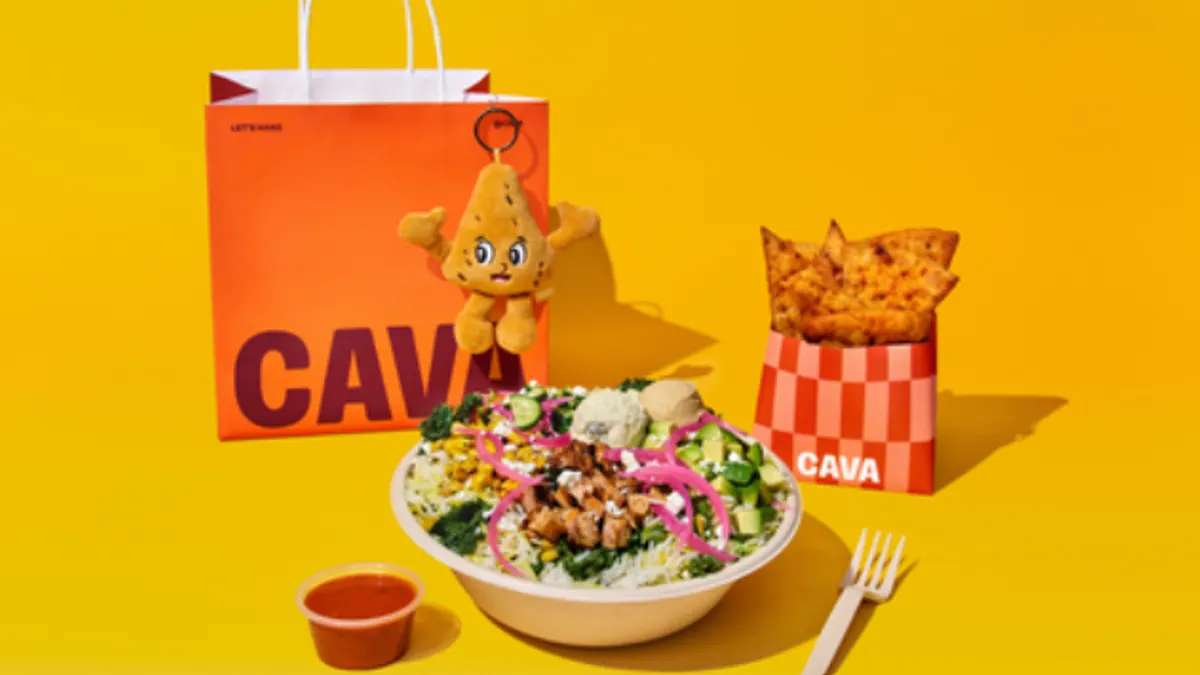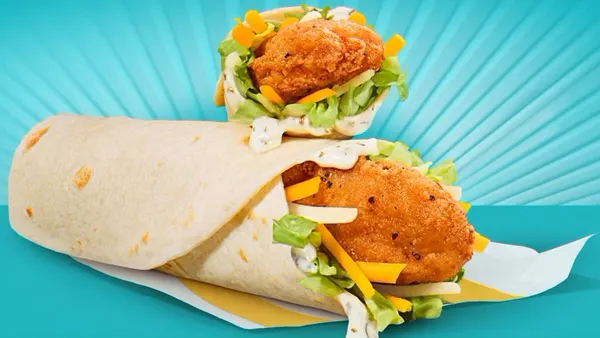The staggering sales losses restaurants suffered in 2020 won’t be easily reversed, even as the U.S. begins to ramp up vaccine distribution, BTIG director and analyst Peter Saleh and National Restaurant Association President Hudson Riehle said Monday during ICR’s virtual conference.
After a few months of recovery, which peaked in early November with a rebound in on-premise dinner traffic, the industry’s short-term gains have been softening, Riehle said, citing NRA data. Labor is also tight as restaurants compete against federal money from stimulus packages and unemployment benefits to attract workers to return to the segment, Saleh said. With the typical American restaurant only raking in an average daily sales volume of $2,700, restaurants are hard pressed to maintain consumer and employee loyalty as margins further erode.
"The industry is technically entering another recessionary period. The question is, what is the magnitude of the second dip? Hopefully the reversal of [the dip] occurs within the next few months," he said.
Negative income growth, disparate restrictions stall progress
Last year, NRA projected that 2020 restaurant sales would reach a record high of $899 billion, Riehle said. This year, the association expects industry sales to be down at least $240 billion, or a decline of 27%. This plummet is marked by shifting consumer priorities — before the pandemic, over half of all food spending in America was allotted toward the restaurant industry, but the industry’s share now hovers at 46% of food spend, Riehle said. This is still a slight improvement, as restaurants’ share of food spend was in the high 30s percentage range in the second and beginning of the third quarter 2020.
"It’s important to see 2021 as a year of transition for the industry. Because when you look at the timing of vaccine distribution reaching a critical mass, it is approaching the summer months," Riehle said. "There’s also the issue of how consumers adapt to lower overall income levels."
Disposable personal income growth is the most important driver of macroeconomic restaurant sales, Riehle said, and though growth in 2020 was boosted by the federal government’s first stimulus package — which distributed checks of $1,200 to U.S. consumers — the association still predicts overall income growth to be negative in 2021. The most recent coronavirus aid package’s $600 stimulus checks are beginning to buoy sales once again, but Riehle argues that these funds need to be supplemented to make permanent traction.
"If [negative income growth] holds true, that obviously indicates that there’s no way sales can rebound to pre-pandemic levels this year. Looking out to 2022’s horizon is … probably much more pragmatic," he said.
Though 2021’s performance will still be marred by dining room closures, capacity restrictions and consumer concern over dining out, there is still opportunity for the industry to take baby steps toward market improvement, Riehle and Saleh said. Before the COVID-19 outbreak hit the U.S. in March of last year, roughly 45% of Americans said they weren’t eating at restaurants as much as they would like. Now, that on-premise demand is around 67%, Riehle said.
"It’s important to see 2021 as a year of transition for the industry. Because when you look at the timing of vaccine distribution reaching a critical mass, it is approaching the summer months. There's also the issue of how consumers adapt to lower overall income levels."

Hudson Riehle
President, National Restaurant Association
"The economy will grow, however the stimulus package is very, very important in terms of the timing and the extent of industry expansion. Yes, the latest stimulus package helped, but it’s basically a down payment toward additional stimulus, which is needed to get the industry back to where it was pre-pandemic," Riehle said.
Even with additional federal support, market progress will be disparate across states because of weather impacts, Saleh said.
"Recovery will be fairly uneven. The West Coast and Northeast have felt the most amount of pain for the longest period of time," Saleh said. "If you look at the same-store sales right now for the past several months in Texas and Florida, they’re down substantially but nowhere near as bad as what we see in other parts of the country that have essentially been locked down since the month of April … where there has been zero or 25% indoor dining at best."
Saleh said because of this dynamic, the restaurant industry will see a stronger initial improvement in states that have been impacted by strict restrictions and harsh winter seasons when the weather warms and vaccine distribution reaches a critical mass.
But regardless of the region, the lessons learned amid pandemic pressure have accelerated restaurant innovation in ways that Riehle and Saleh predict will define 2021 and steer the industry closer to recovery.
"There’s going to be a lot of changes going forward… [but] I think these tough times are breeding good habits," Saleh said.
Trim, flexible menus will optimize efficiency and demand
One adjustment that Saleh predicts will remain in place even as the pandemic abates is streamlined menus. Fewer menu items have allowed for faster throughput at drive-thrus and better labor productivity, he said, and operators will want to hold on to the efficiencies that they have gained during the pandemic.
"Darden [Restaurants] is talking about how they can get back to pre-COVID profitability with just 90% of pre-COVID sales, and a lot of that benefit is coming on the labor line," Saleh said.
Flexible menu pricing made possible by the widespread advent of mobile apps and digital ordering platforms will also help drive incremental demand, Riehle said.
"Ten years ago the industry didn’t have the technology to … integrate menu pricing with [a] consumer loyalty program, as well as knowing what the consumer demographic is, … collect that data and then use AI to integrate it to generate additional incremental demand," Riehle said.
The desire to maintain compact menus won’t hamper innovation, however, Saleh and Riehle agreed, pointing to the success restaurants have gained from adding alcohol to delivery menus.
"Over half of millennials are more likely to choose a restaurant based on alcoholic beverages, so [alcohol delivery] has been another lifeline for restaurants amid the pandemic," Riehle said.
Riehle also expects the growth in blended meals, or meals that combine traditional menu items with make-at-home ingredients, to continue in 2021 despite the home labor requirement. Restaurant subscription packages are another way operators can drive excitement and convenience around their menu offerings, with 7 out of 10 millennial diners likely to subscribe to a food subscription package.
Delivery demand will soften, curbside holds strong opportunity
Another menu benefit that restaurants can take advantage of in 2021 — though perhaps not for long -- is a lack of diner price sensitivity toward delivery offerings, Saleh said.
"I was talking to an operator the other day. He [does] delivery on DoorDash and orders were coming in so fast he couldn’t service them all. So he hiked up the prices to try and slow it down and it never skipped a beat," he said.
Still, as the coronavirus vaccine becomes more widely available and more consumers return to eat on-premise, diner sentiment around delivery could shift along with restaurant delivery mix.
"2020 was the delivery Super Bowl — everybody was home," Saleh said. "We have some operators we’re covering that are running at a 25% to 30% delivery mix… [but] I don’t think that’s going to be a sustained level."
Still, Saleh and Riehle agree that delivery demand will remain elevated over pre-pandemic sentiment.
"Pre-pandemic, over 60% of restaurant traffic was on-premise. During the pandemic, the proportion of off-premise has moved up to nearly 90% and has now settled back down into the 80s [percent range]," Riehle said. "Once the pandemic ends that proportion will decline but my sense is that the [delivery component] does occupy a greater share."
Though delivery is perhaps the buzziest off-premise channel, carryout is the most predominant form of off-premise, Riehle said.
"I think we're going to see… more restaurants punching a hole in the wall [and] putting up a takeout window, more carside delivery and just working to improve that experience," Saleh said. "I think those [strategies] will be the focus for the next couple of years."
Ghost kitchens demand and costs will rise
This boom in off-premise business is making ghost kitchens more attractive to restaurants looking for a fast, easy path into new markets, Saleh said, but he added that his sources are encountering steep upfront costs when exploring these models.
"I was talking to an operator the other day and he said he would [have to] pay the same amount for a ghost kitchen at 200 square feet than he would for an almost 3,000-square-foot restaurant in the same market. He was blown away by that price point," Saleh said.
He suggests that the industry should begin examining the number of brands entering the ghost kitchen market, rather than the number of restaurant locations in the market, to determine how healthy the segment really is.
"Ghost [and] virtual kitchens for the industry are definitely a long-term trend. It’s not a fad," Riehle said. "It doesn’t mean it’s a panacea for success in the industry, it’s just operationally a new business model."
Consumer familiarity and interest in food halls translate well to this virtual offering because, in some cases, diners can order from multiple virtual brands and have those orders consolidated and delivered as one shopping cart, Riehle said.








